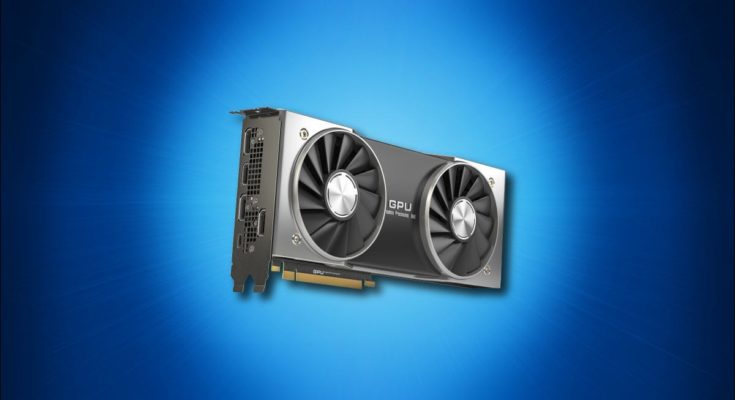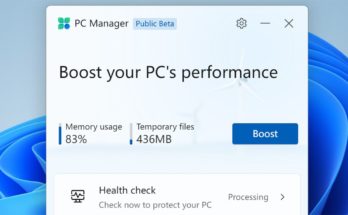
Data like rendered frames, textures, and shadows get stored in GPU memory, allowing your computer’s GPU to access this information quickly. But does it really matter how much GPU memory you have? Yes. Here’s why.
Índice
What Is VRAM Used for?
Similar to system RAM, Video Random Access Memory (VRAM) stores graphics data so that the GPU can access it, fast, allowing you to see visuals on your computer screen. It’s RAM that’s designed to be used with your computer’s GPU, taking on tasks like image rendering, storing texture maps, and other graphics-related tasks.
VRAM was initially referred to as DDR SGRAM. Over the years, it evolved into GRDDR2 RAM with a memory clock of 500MHz. Today, GDDR6 RAM can reach transfer rates of over 144GB/s, and memory clock speeds of over 1125MHz.
EVGA’s release of the GeForce RTX 3080 Ti, for example, boasts 12GB of GDDR6X RAM and a boosted memory clock of 1800MHz. The question, however, is whether a gaming PC or laptop really needs that amount of VRAM.
Recommended VRAM for Applications and Gaming
Your computer’s VRAM requirements will differ depending on what you use your machine for. Graphic designers, modelers, engineers, and creators often use powerful software that requires more VRAM, depending on how complex the project is.
The absolute minimum VRAM requirement for 3D modeling, animation, video editing, and graphic design sits between 4-6GB of GDDR5. However, it’s recommended that you use the latest version of VRAM, so up to 6GB of GDDR6 would be preferable.
Depending on the complexity of the projects you’re working on, the recommended average VRAM is anywhere from 6-8GB of GDDR6 and upward. But, if you have the budget to upgrade your graphics card, 10GB plus of GDDR6/6X VRAM will be more than enough to run differing workloads seamlessly.
VRAM also has a significant impact on gaming performance and is often where GPU memory matters the most. Most games running at 1080p can comfortably use a 6GB graphics card with GDDR5 or above VRAM. However, 4K gaming requires a little extra, with a recommended 8-10GB plus of GDDR6 VRAM.
Depending on the types of games you play, throwing more VRAM at your graphics card doesn’t mean your GPU will perform better.
If you’re playing a game on an 800×600 resolution monitor, 4GB of VRAM is actually too much, and won’t make a difference to your computer’s performance. However, playing at 1440p or 4K with the same amount of VRAM isn’t suitable; it’s not enough VRAM to handle the full experience of games in these resolutions.
What Factors Impact VRAM?
Aside from playing games and running applications, there are other factors that impact VRAM. These factors determine whether your computer needs more or less VRAM, so it’s important to understand your requirements.
Your PC’s monitor or laptop’s display uses more VRAM if it has a larger resolution. Processing a single frame uses VRAM, so the more pixels contained in each frame, the more VRAM required.
A 1080p display takes up less VRAM than a 1440p monitor, but a 4K monitor at 3840×2160 will take up more VRAM than a 2560×1440 (1440p) one. Thus, more VRAM is needed for playing games on a 4K monitor.
As we know, gaming uses VRAM. But the amount it uses differs depending on the type of game you’re playing. If you’re a fan of Minecraft, for instance, which is a less graphically-intense game, you’re not going to need much VRAM. In comparison, if you’re playing a AAA title with dense scenery and detailed landscapes like Dying Light 2 or Elden Ring, you’ll need a lot more VRAM to run the game smoothly.
Similarly, the settings in which you play games on your computer affect how much VRAM you need. As a blanket rule, higher settings will require more VRAM; each rendered frame puts more pressure on your graphics card. But, on top of that, you need to consider technologies like Ray Tracing and DLSS; these are stored in VRAM too.
How Much VRAM Do You Need?
Whether you want to play games on the highest settings with a steady frame rate or work on detailed graphical projects, VRAM plays a part in your choice when deciding on the best graphics card for your computer or laptop.
Investing in a GPU that offers slightly more VRAM than you currently need is definitely worthwhile. Not only does it cater to your existing needs, but it future-proofs your PC for the coming years, saving you from having to upgrade your graphics card so soon.
Installing a graphics card with at least 6GB of GDDR6 VRAM will likely cover you for most graphics-based tasks and games. However, our recommendation would be to opt for 8GB or 10GB if your budget allows for it.
RELATED: Where You Should Splurge When Building a PC (and Where You Shouldn’t)



